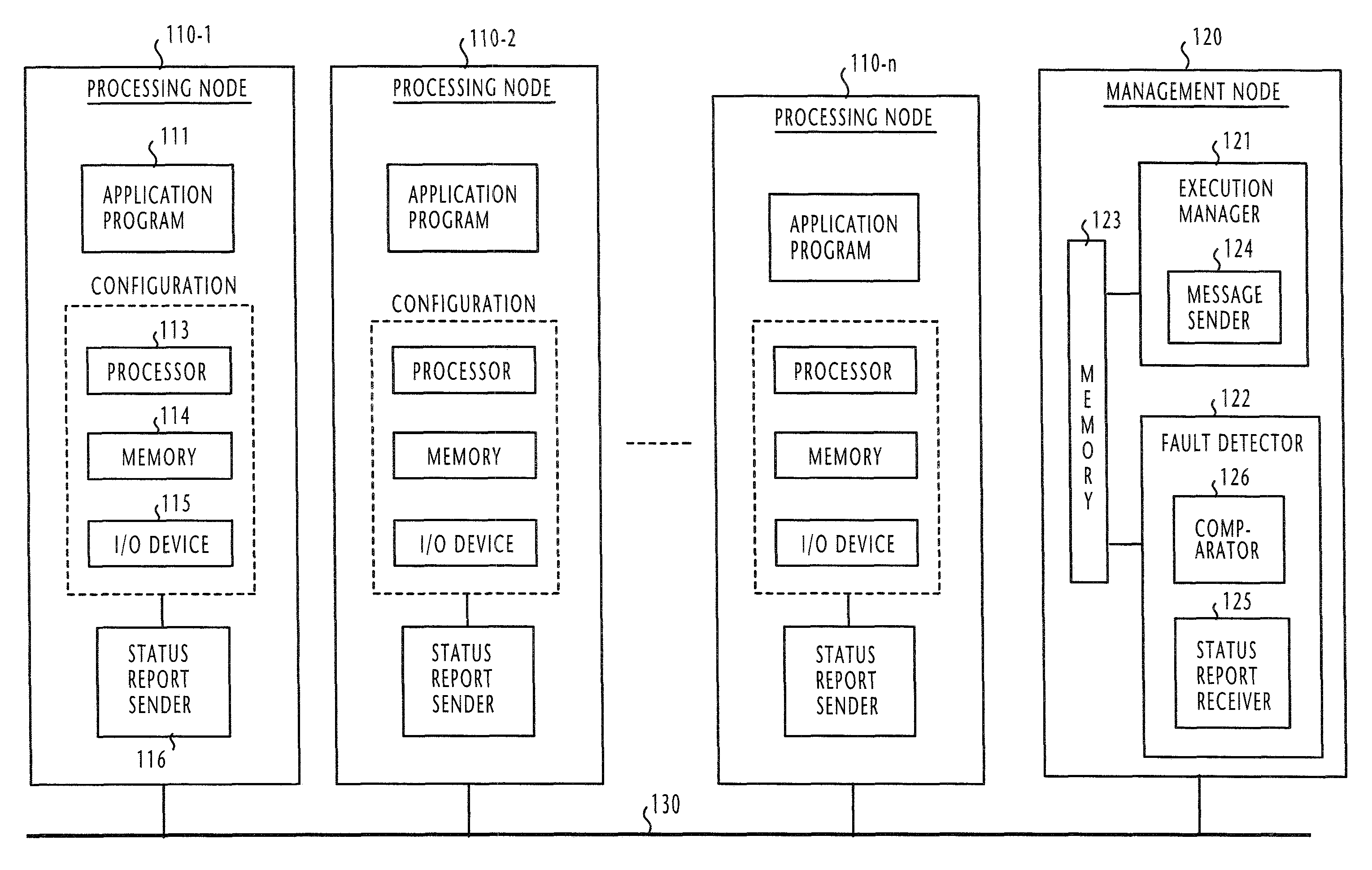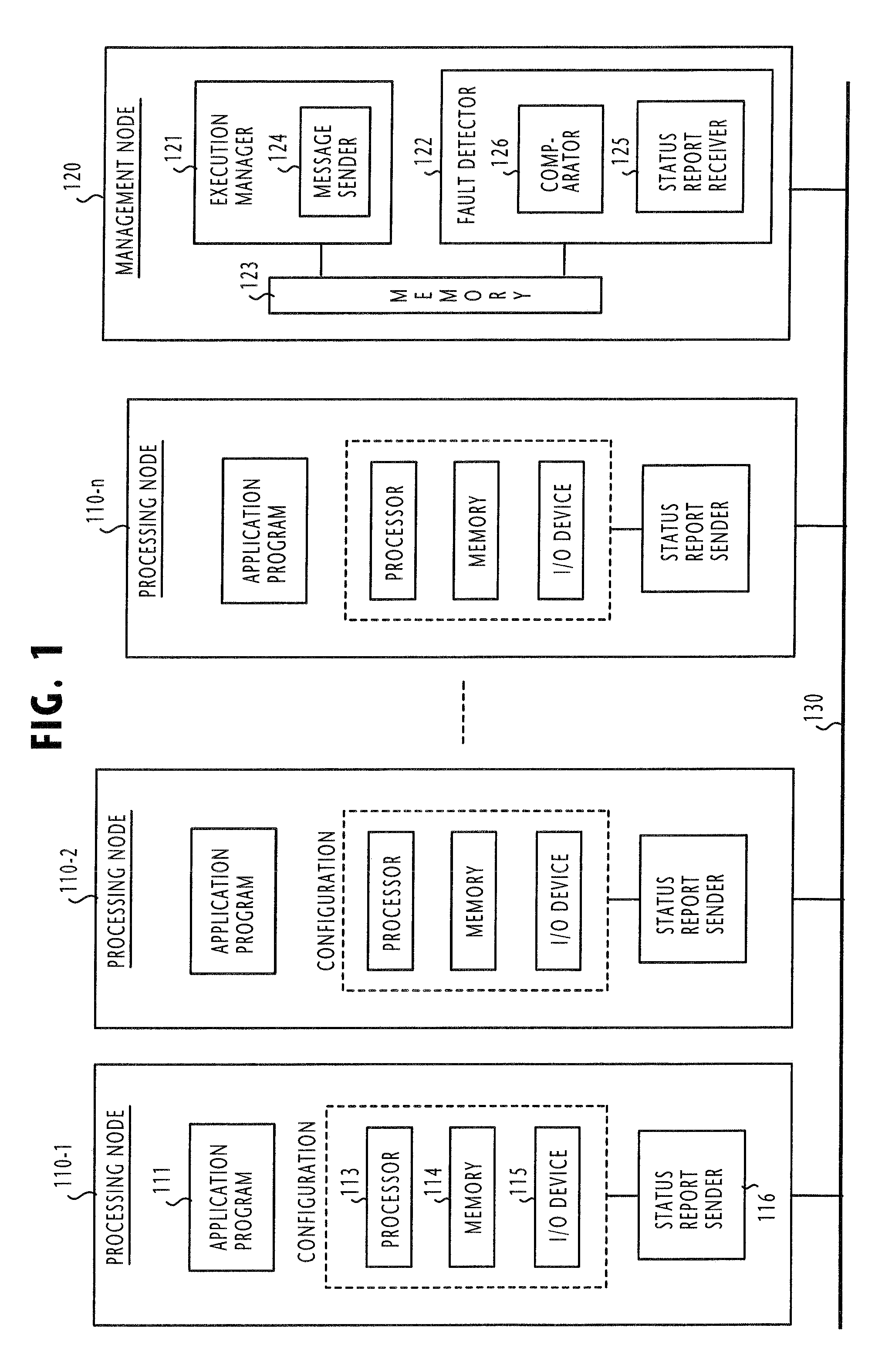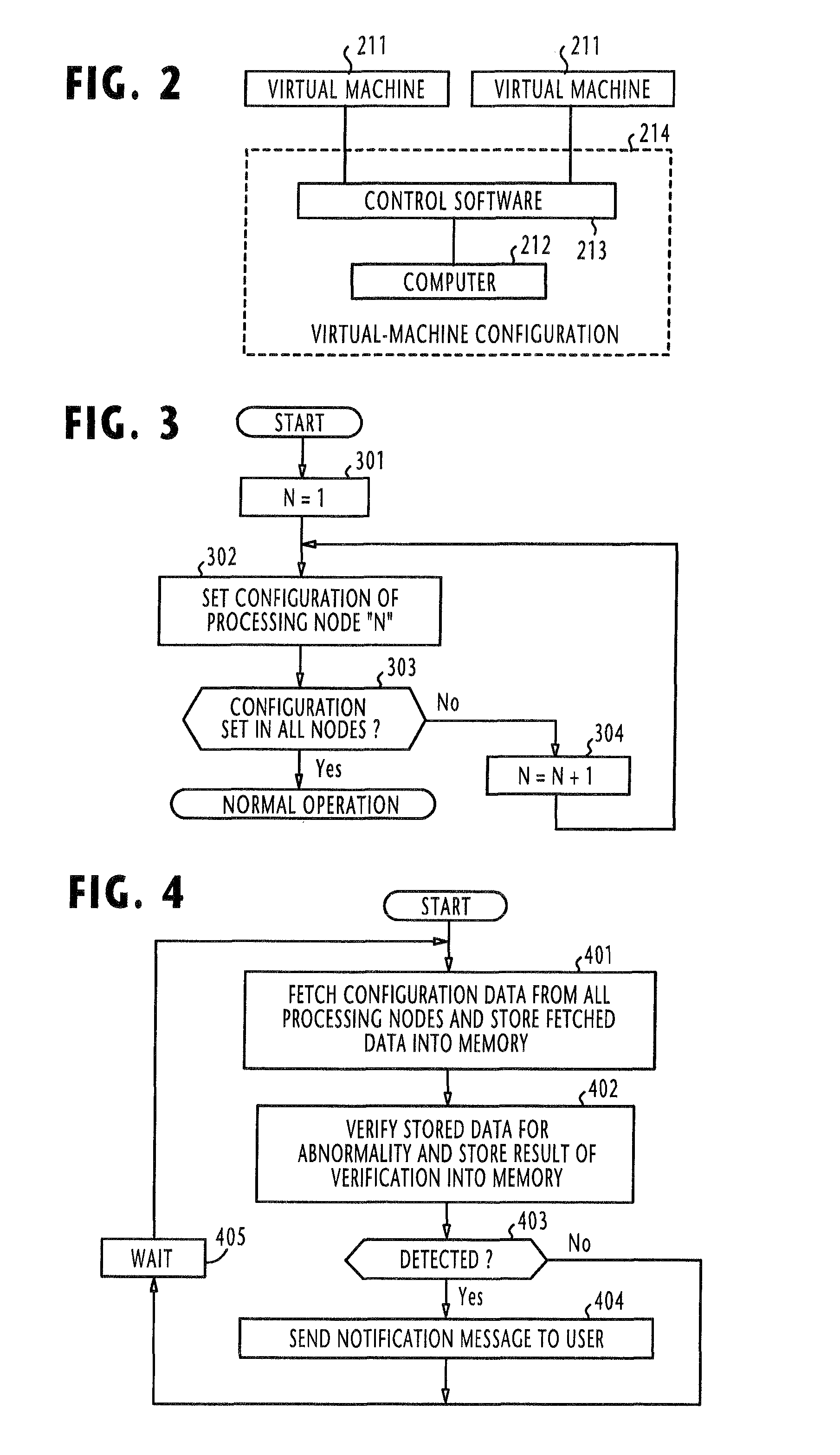Fault tolerant multi-node computing system using periodically fetched configuration status data to detect an abnormal node
a computing system and configuration status technology, applied in the field of multi-node computing system, can solve the problems of abnormal end, premature program end, and prohibitively high development cost of version diversity technique, and achieve the effect of less costly to develop application programs and less costly to execute application programs
- Summary
- Abstract
- Description
- Claims
- Application Information
AI Technical Summary
Benefits of technology
Problems solved by technology
Method used
Image
Examples
first embodiment
[0037]Referring to FIG. 1, there is shown a fault tolerant parallel-running computing system according to the present invention. The computing system comprises a plurality of processing nodes 110-1˜110-n and a management node 120. All processing nodes and the management node are inter-connected via a common communication medium 130 which may be a serial or parallel bus, wireline or wireless LAN, WAN, the Internet or a public switched network, or a combination of theses. Each of the processing nodes 110 comprises a processor 113, a memory 114 and an input / output device 115, all of which are combined to form an operational environment, or configuration.
[0038]An application program 111 is installed in each processing node. For operating the processing nodes in a parallel running mode, the application programs 111 of all processing nodes are identical to each other in terms of functionality, but are uniquely different from every other nodes in terms of software version number.
[0039]In e...
second embodiment
[0157]FIG. 5 shows the present invention which differs from the previous embodiment in that the execution manager 121 includes a stop command sender 501, instead of or in addition to the message sender 124 of FIG. 1.
[0158]According to the second embodiment of the present invention, the execution manager 121 of FIG. 5 repeatedly executes the routine of FIG. 6 at periodic intervals. In each routine, the execution manager 121 starts with decision step 601 to determine if more than a predetermined number of processing nodes are operating. If not, flow proceeds to the end of the routine. If the decision is affirmative at step 601, flow proceeds to step 602 to fetch configuration items from all operating processing nodes and stores the fetched data in the memory 123. At step 603, the comparator 123 reads the stored configuration status data from the memory 123 and verifies the status data by comparisons between each node and every other node in the same manner as described above. If the c...
third embodiment
[0160]FIG. 7 shows the present invention which differs from the previous embodiment in that the execution manager 121 includes a reconfiguration manager 701. In this embodiment, the memory 123 stores information indicating the number of processing nodes that can be incorporated into the system for parallel run operation, the configuration data of such processing nodes, and the number of currently operating processing nodes.
[0161]According to the third embodiment of the present invention, the execution manager 121 of FIG. 7 repeatedly executes the routine of FIG. 8 at periodic intervals. In each routine of FIG. 8, the execution manager 121 of FIG. 7 begins with step 801 to fetch configuration items from all operating processing nodes and stores the fetched data in the memory 123. At step 802, the comparator 125 reads the stored configuration status data from the memory 123 and compares the status data item-by-item between each node and every other node. If the comparator 125 detects ...
PUM
 Login to View More
Login to View More Abstract
Description
Claims
Application Information
 Login to View More
Login to View More - R&D
- Intellectual Property
- Life Sciences
- Materials
- Tech Scout
- Unparalleled Data Quality
- Higher Quality Content
- 60% Fewer Hallucinations
Browse by: Latest US Patents, China's latest patents, Technical Efficacy Thesaurus, Application Domain, Technology Topic, Popular Technical Reports.
© 2025 PatSnap. All rights reserved.Legal|Privacy policy|Modern Slavery Act Transparency Statement|Sitemap|About US| Contact US: help@patsnap.com



